Red Lentil Bread Rolls {Video}
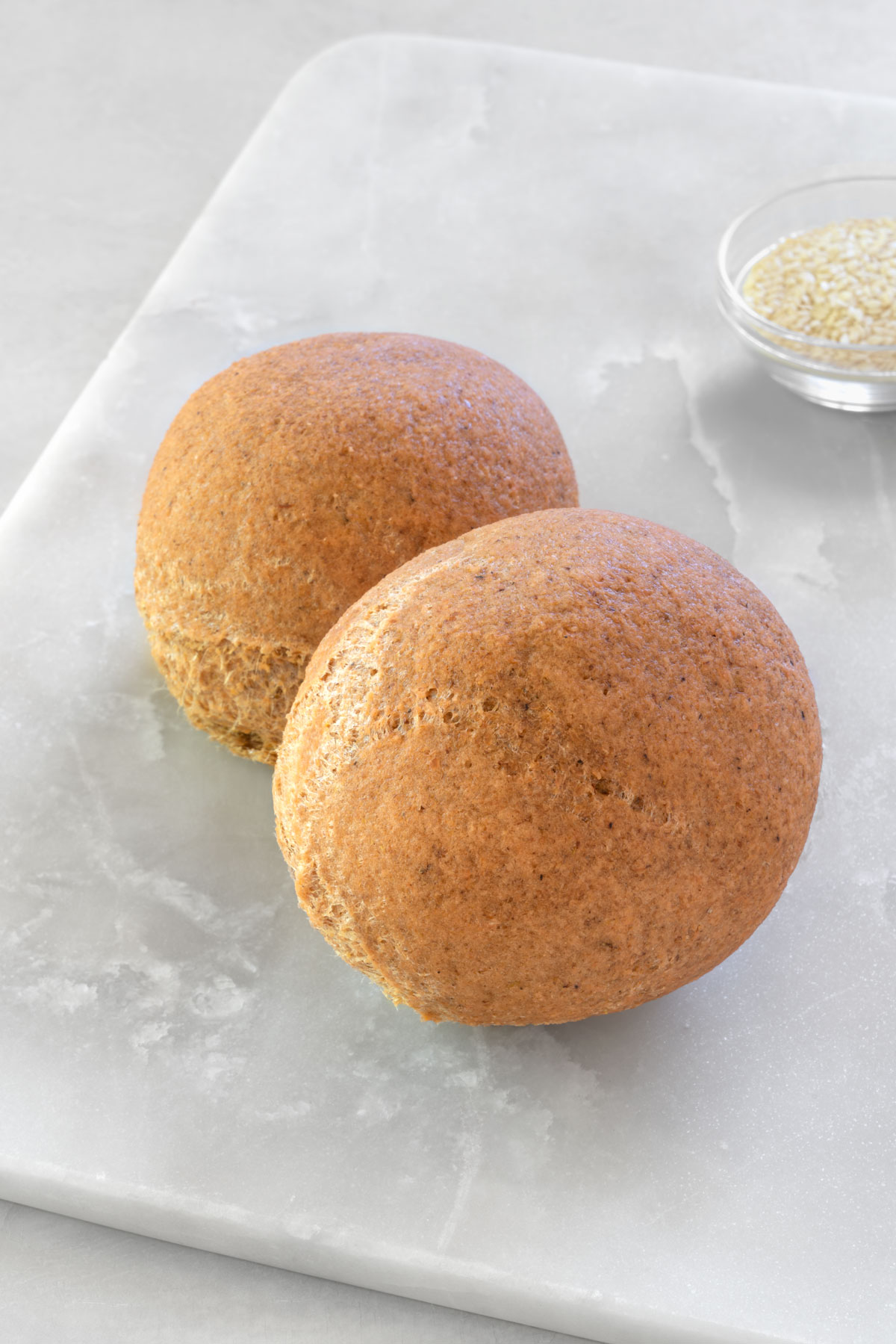 Lentil bread rolls are a great alternative to standard bread rolls. They’re perfectly crusty on the outside, soft (but quite dense) on the inside. and have an incredible toasty, whole-grain taste, just like your favorite artisan rolls. They’re vegan (dairy-free, egg-free), grain-free (gluten-free), soy-free, nut-free, and refined sugar-free.
Lentil bread rolls are a great alternative to standard bread rolls. They’re perfectly crusty on the outside, soft (but quite dense) on the inside. and have an incredible toasty, whole-grain taste, just like your favorite artisan rolls. They’re vegan (dairy-free, egg-free), grain-free (gluten-free), soy-free, nut-free, and refined sugar-free.
Finding high-quality, minimally processed, ideally grain-free, sprouted bread in a grocery store is challenging. I would go as far as to say that it’s nearly impossible!
Personally, I don’t eat white bread. Despite white bread’s popularity and its benefit as a convenient, portable food, it has very little nutritional value. It contains processed, refined carbohydrates with most nutrients and fiber removed and added sugar. The sugar content in the average slice of processed bread varies but can be as high as 3g.
Whole wheat bread often isn’t much better. Most whole-wheat bread varieties contain enriched, refined flour as the first ingredient, meaning the bread contains more refined flour than whole wheat. In addition, the team behind Modernist Bread: The Art and Science – looked at 50 years of health and nutrition studies and concluded that human digestion doesn’t break down the whole wheat the way chemical analysis in a lab does, and that means our bodies don’t actually absorb many of the vitamins and minerals from whole wheat.
Of course, there’s also an array of gluten-free breads containing no wheat whatsoever. However, these are typically full of empty calories – starches and gums – and hidden sugars.
So, I make my own bread. Always. I honestly don’t remember the last time I bought bread. I have several bread recipes on the blog I love, and these lentil bread rolls are just another recipe in the rotation. Whether you are looking for a gluten-free option or want to switch up your bread game, lentil bread rolls are definitely worth a try.
Tips for Making Lentil Bread Rolls
Ingredients
You only need a few ingredients to make these grain-free bread rolls:
- Red lentils: lentils are the star ingredient of this recipe. You can use any variety you like – I prefer red lentils because they take the shortest time to soak and give the bread rolls a beautiful light brown color. The combination of red lentils and psyllium makes the bread rolls look like whole wheat bread rolls. Regardless of the variety, use dry lentils, not cooked!
- Psyllium husk: psyllium acts as a binder in this recipe. It adds gluten-like structure, tenderness, and elasticity by producing a colloidal system. In other words, it binds water and, even at very low concentrations, can cause a significant increase in the viscosity of a liquid, forming a springy, somewhat extensible dough.
- Olive oil: I have made these rolls with and without oil and prefer adding oil. The olive oil improves the crumb structure, making softer and more moist bread rolls. This is because the oil in the dough prevents water from evaporating during baking. As the water is retained, it keeps the baked bread moist and tenderized.
- Baking soda: since these red lentil bread rolls contain no yeast, baking soda acts as a leavening agent. You could use baking powder as a substitute, but I don’t recommend it. First, baking soda is about four times as strong as baking powder, so you would need to use around four times as much powder as soda to create the same rising ability, potentially causing the bread rolls to have a chemical or bitter taste. Second, baking soda helps baked goods brown better. So, use baking soda if possible.
- Lemon juice: baking soda needs an acidic ingredient to produce carbon dioxide. The small bubbles of carbon dioxide gas become trapped in the dough, causing it to rise. Lemon juice is a common acid, but vinegar can be used in this recipe.
- Salt: as with almost all foods, salt imparts flavor to bread. If you’ve ever tried bread without salt, you’ll know it tastes bland and flavorless, so add a generous pinch of salt.
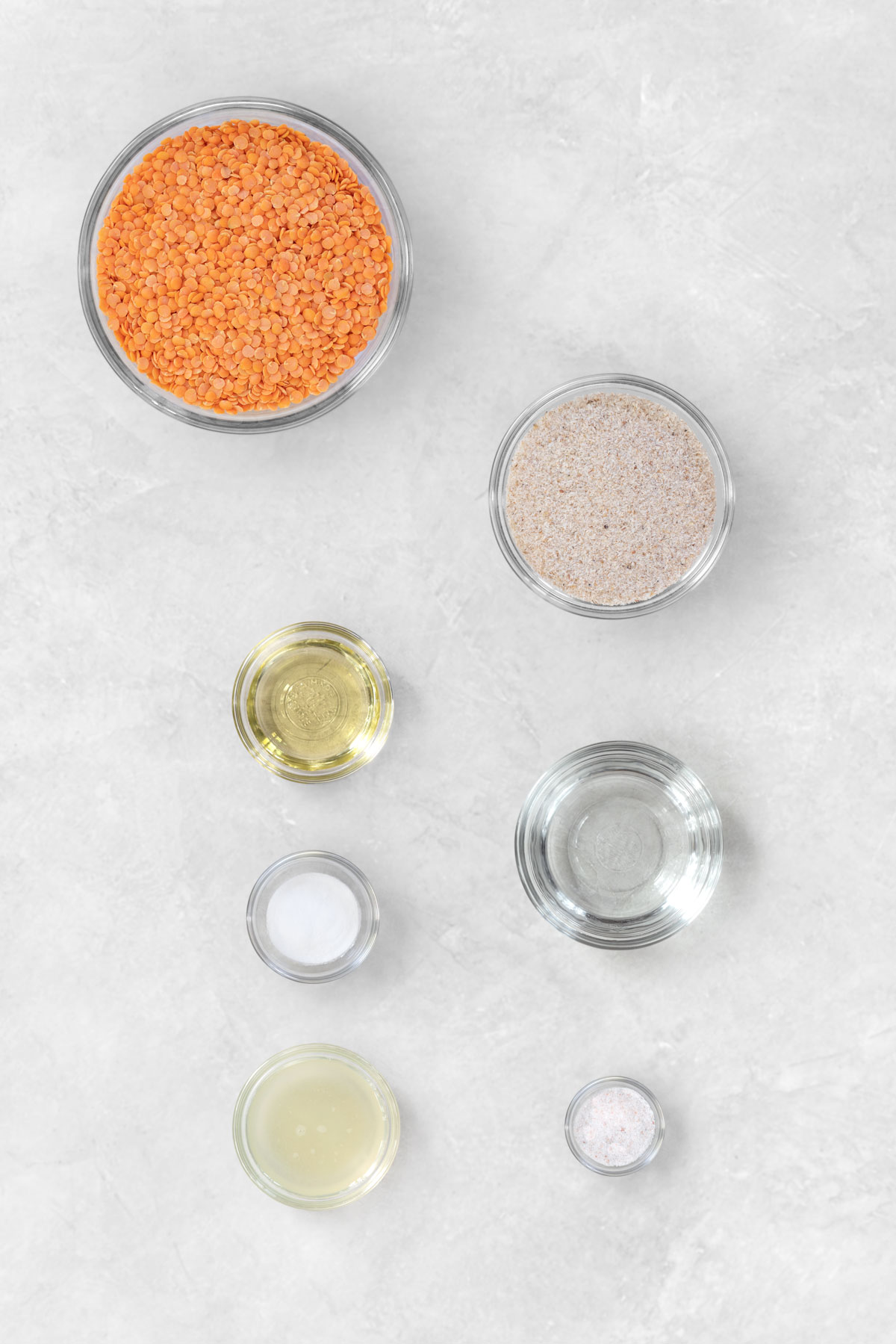
How to Make Red Lentil Bread Rolls
Once the lentils are soaked, the actual process of making lentil bread rolls is quick and easy. Here’s how to make lentil bread rolls at home:
- Soak the lentils. Add the dry red lentils to a bowl, cover them with water, and let them soak for at least 2 hours, ideally 8 hours. Once soaked, drain the soaking water and rinse the lentils.
- Sprout the lentils (optional). Transfer the soaked lentils into a strainer and set the strainer over a large bowl so any excess water can drain. If you’re using a sprouting jar, invert it into a large bowl or another object that allows it to sit at an angle. This lets water drain constantly. The lentils must stay moist but shouldn’t sit in water. After 8-12 hours, sprouts should start to emerge. If there are no sprouts, drain, rinse, and leave again for a few more hours. While sprouting is not necessary, it does boost fermentation activity.
- Blend. Add the sprouted (or just soaked) lentils to a food processor together with the water, psyllium, olive oil, baking soda, and salt, and process until a dough forms. Finally, add the lemon juice and process until just combined. The reaction baking soda creates upon contact with acid is immediate, so don’t let the dough rest and work as quickly as possible before all the bubbles dissipate.
- Shape the bread rolls. Shape the dough into a log and divide it into four equal pieces. Shape each piece into a neat ball and transfer it to a parchment paper-lined baking sheet. I typically use a cast iron griddle and bake the rolls without parchment paper.
- Bake. Slide the baking tray into the oven and bake the bread rolls at 356ºF/180ºC until crispy and golden brown, for about 25 minutes.
- Cool. Transfer the bread rolls onto a cooling rack and let them cool completely.
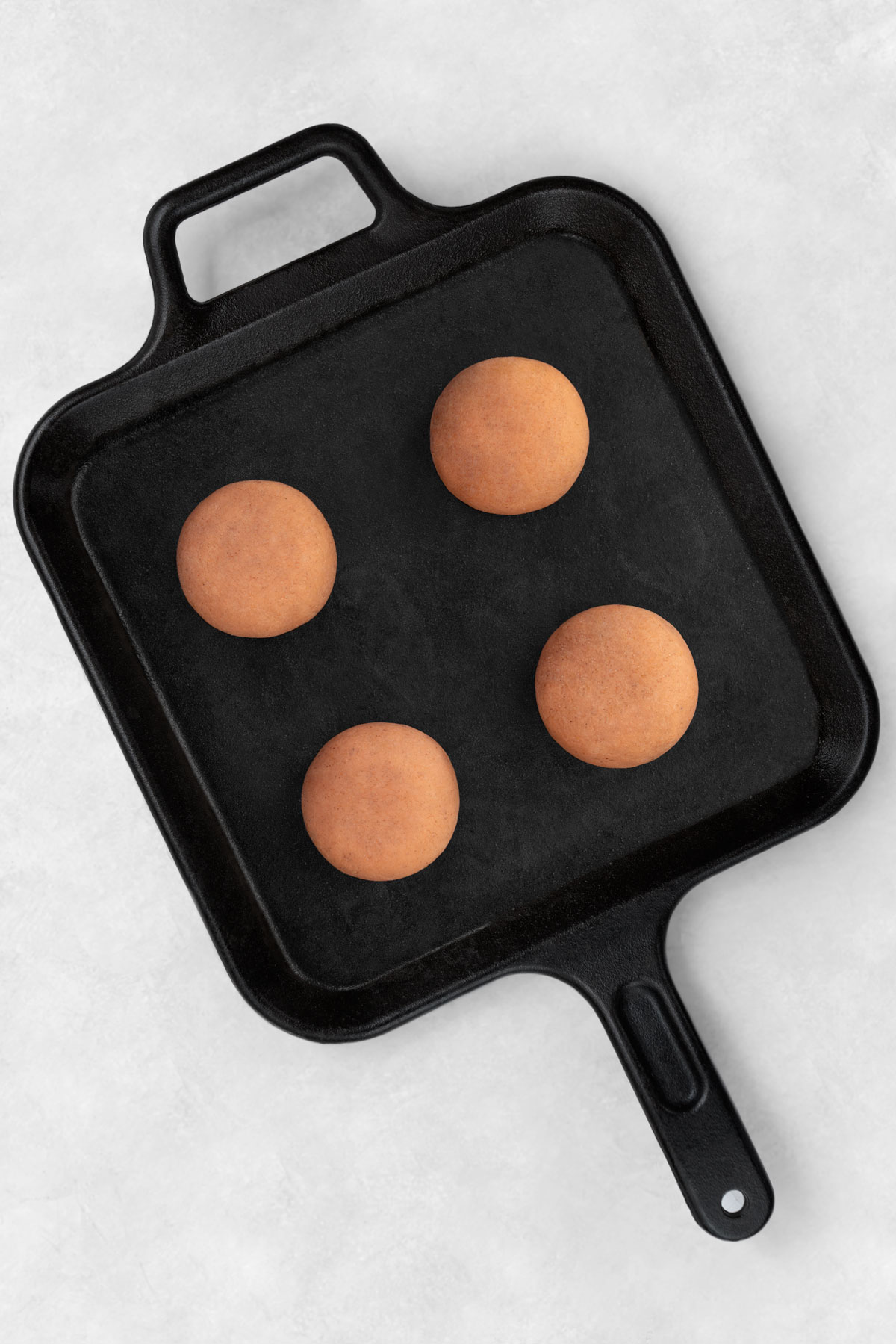
How to Serve Red Lentil Bread Rolls
These bread rolls are very filling. Just one lentil bread roll will keep you full for hours!
I typically serve these bread rolls with purred soups or stews for a complete meal. They’re also great with hummus or an avocado spread (½ avocado – mashed with ½ tsp. lemon juice, salt, and black pepper).
How to Store Lentil Bread Rolls
- Storing at room temperature: these rolls are best on the day they’re made. To keep the rolls fresh and soft, let them cool thoroughly, then store them at room temperature in an airtight container for 1 day.
- Freezing: transfer the red lentil bread rolls to an airtight container and freeze them for up to 1 month.
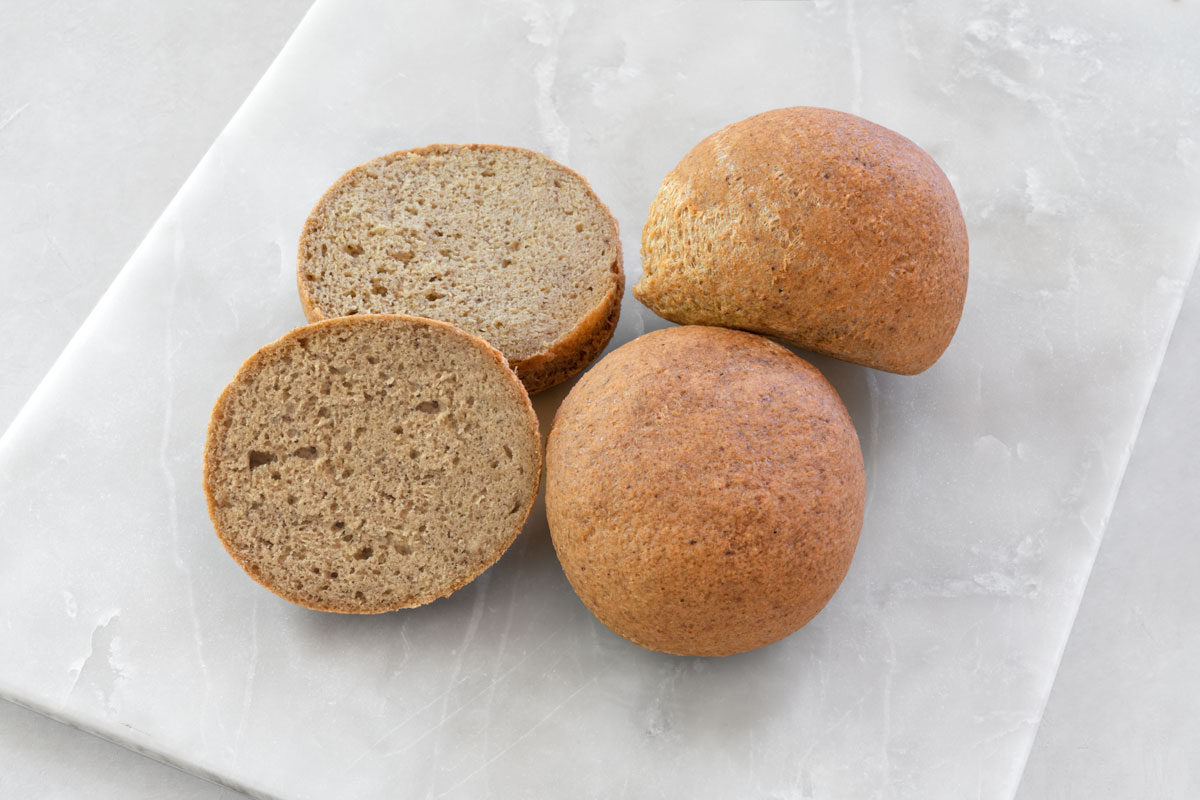
More Grain-Free Bread Recipes
- Low-carb bread rolls: similar to the lentil bread rolls, these low-carb bread rolls also rely on psyllium husk. However, the main ingredients are almond flour and coconut flour instead of lentils. They have a light crust and a soft, chewy crumb.
- Nut and seed bread: this bread is quite unique in that it is not leavened. It’s made entirely from nuts and seeds, and it’s dense, chewy, and filling.
- Buckwheat quinoa bread: making sourdough bread with a starter requires planning and practice. This buckwheat quinoa bread is a type of sourdough bread that doesn’t rely on any starter! It has a slightly tangy flavor and a hearty texture with a firm crust and a moist, soft interior.
If you try any of these recipes, please, leave a comment and rate the recipe below. It always means a lot when you do.
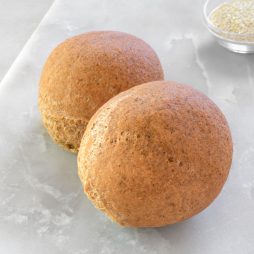
Red Lentil Bread Rolls
Ingredients
- 1 cup (200 g) red lentils
- 1/4 cup (20 g) whole psyllium husk
- 1/4 cup (60 ml) water
- 1 Tbsp. (15 ml) olive oil
- 1 Tbsp. (15 ml) lemon juice
- 2/3 tsp. (4 g) baking soda
- 1/2 tsp. (2.9 g) salt
Instructions
- Soak the lentils. Add the dry red lentils to a bowl, cover them with water, and let them soak for at least 2 hours, ideally 8 hours. Once soaked, drain the soaking water and rinse the lentils.
- Sprout the lentils (optional). Transfer the soaked lentils into a strainer and set the strainer over a large bowl so any excess water can drain. If you’re using a sprouting jar, invert it into a large bowl or another object that allows it to sit at an angle. This lets water drain constantly. The lentils must stay moist but shouldn’t sit in water. After 8-12 hours, sprouts should start to emerge. If there are no sprouts, drain, rinse, and leave again for a few more hours. While sprouting is not necessary, it does boost fermentation activity.
- Preheat the oven. Arrange a rack in the middle of the oven. Heat the oven to 356ºF/180ºC.
- Process. Add the sprouted (or just soaked) lentils to a food processor together with the water, psyllium, olive oil, baking soda, and salt, and process until a dough forms. Finally, add the lemon juice and process until just combined. The reaction baking soda creates upon contact with acid is immediate, so don't let the dough rest and work as quickly as possible before all the bubbles dissipate.
- Shape the bread rolls. Shape the dough into a log and divide it into four equal pieces. Shape each piece into a neat ball and transfer it to a parchment paper-lined baking sheet.
- Bake. Slide the baking tray into the oven and bake the bread rolls until crispy and golden brown, for about 25 minutes.
- Cool. Transfer the bread rolls onto a cooling rack and let them cool completely.
- Store. Leftover bread rolls are best on the day they’re made. To keep the rolls fresh and soft, store them at room temperature in an airtight container for 1-2 days. For longer-term storage, freeze in an airtight container for up to 1 month.


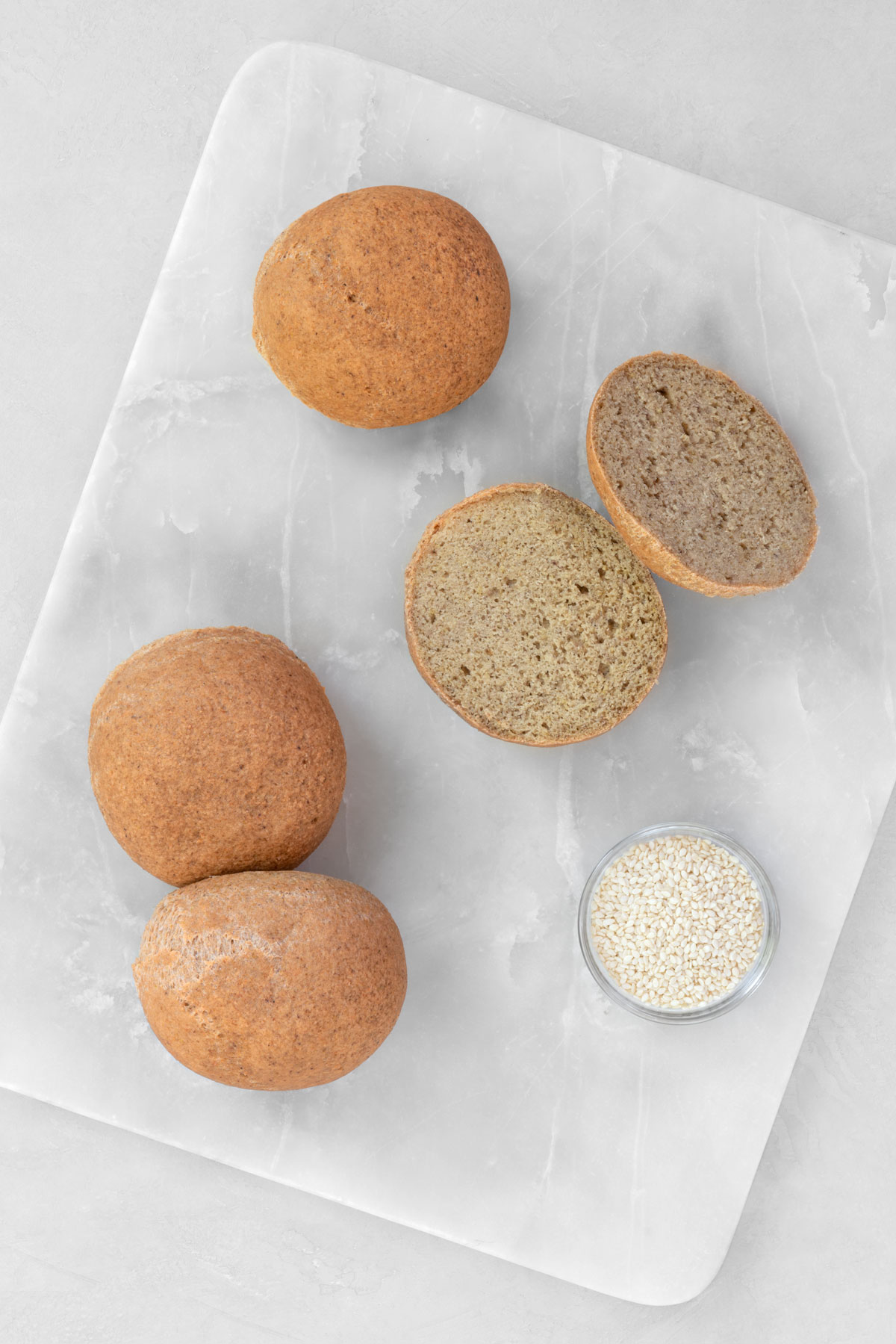
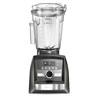
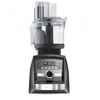
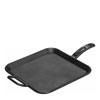

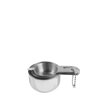


In would like to make these red lentil bread rolls. please tell me how to do this without a food processor or mixer
Hi Nina – I apologize for the late reply! I somehow missed your comment! Unfortunately, you do need a food processor (or a powerful blender) for this recipe.
I made them with a stick blender and it turned out ok!
So happy to hear that. Thank you for the feedback, Silja!
I have psyllium powder…could I use this?
HI Sandy – whole psyllium husk and psyllium powder are typically interchangeable – except that instead of 4 Tbsp. of whole psyllium, you would only need about 3 Tbsp. of powder. To be honest, I prefer whole psyllium for several reasons, but psyllium powder should work. I haven’t tried making this recipe with psyllium powder (yet), so unfortunately, I can’t guarantee the results. Please, let me know how it goes if you give it a try.
Hi there, love your recipes! I live in the country and I can’t get psyllium husks at my local grocery store. Do you know if flax meal would work? Thanks for any info!
Hi Sharon – that’s a great question. I have had a few people ask me if they can substitute the psyllium husk with flaxseed meal, but I haven’t tried it. The reason I chose psyllium over flax seeds is that psyllium is a much stronger binder than flaxseed meal. So, you would likely need to use more flaxseed meal for the recipe to work. I will start experimenting with flaxseed meal and see if I can make it work.
hi, I’ve made this recipe 3 times now, it makes perfect breadrolls. I used lime juice instead of lemon juice.
But for some reason, mine are really wet when I put them onto the baking tray, also I am making multiple dinner size rolls-
Question~ Could this recipe be used to make a pizzabase, as it is nown stick and cooks perfectly,
thanks so much
Hi Jen – yes, the dough will be quite wet right after you process it. Psyllium absorbs moisture gradually, so the longer you let the dough rest, the drier it gets. Yes, you could totally use this as a pizza base. However, it will never get as crispy on the edges as a regular pizza crust.
Great idea to make pizza crust! Thanks for the suggestion
I made these today – they were excellent. Pre-soaked and sprouted for a day – they came out round and puffy (I was afraid they’d deflate, but that never happened). I used apple cider vinegar instead of lemon juice. They need more salt in my opinion too. I sliced each one into 4 slices and toasted – it was so yum with avocado and cheese. Thank you for the recipe!
Amazing! So happy to hear that, Olga! Thank you so much for your feedback!
Hey Petra, could a jump to recipe button be included on your posts. Thanks much
Hi Kim – I will definitely look into it. I am currently getting my website redesigned, so hopefully I can include it.
This blew me away, thank you for sharing. Really rare to find a gluten free loaf that has such simple ingredients.The dough formed well with an incredible texture and it was so fun to see the transformation from lentils to dough. And it was delicious.
Thank you!!
Awesome! Thank you so much for the wonderful feedback and rating, Charlotte! So happy you enjoyed the recipe 🙂
I tried these rolls (I just soaked the lentils) and my husband announced that he was GOBSMACKED at how good they were. They even have the texture of normal bread rolls, which is wonderful.
I can’t thank you enough for this amazing and simple recipe!!
Hi Lee-Anne, thank you so much for taking the time to share your feedback and rating even on my blog. You are the best!
Absolutely amazing bread rolls! My entire family devoured them in one sitting. Thank you for sharing such wonderful recipes.
You are very welcome, Dana! So glad you liked the recipe!
I soaked 1 cup of red lentils and I have around 2.5 cups now. When you make the dough, do you use all the soaked lentils, or only 1 cup of the soaked lentils?
Hi Judy – yes, use all the soaked lentils. How did the bread rolls turn out?
Hi Petra, I made this recipe and used ground flax instead of psyllium husk. However the 1 cup of lentils after soaking was about 2.5 cups and it never made a dough consistency. More like cake batter. How many cups of soaked lentils did you use?
HI Lynn – yes. that is correct. A cup of dried lentils is about 2.5 cups of soaked lentils (which is what I used). Unfortunately, you can’t simply swap psyllium husk for flaxseed meal. Psyllium is a much stronger binder than flaxseed meal, so you would need to use more flaxseed meal for the recipe to work.
I did the same thing (substituted flax for husk)… yup, ended up with wet sticky dough that I had to add lentil and wheat flour too – which essentially bypasses what I was trying to do with flour free rolls. They still came out OK. Followed recipes to exactly many times now and it is perfect. I also experimentally add turmeric, pepper, onion, garlic powder, paprika, saffron, nutritional yeast, herbs de Provence- whatever I’m in the mood for- 2-4 TB and it’s always terrific. Perfect gluten free vegan wheat free sugar free!
Thank you, they were yummy though!
Thank you, Lynn!
I just made these this morning and they are amazing! I wasn’t sure how this would turn out and I have to say I am SHOCKED at how good this are and I am just surprised and thrilled to have this option in my life!!!!! Thank you for sharing this recipe it is a game changer for my health journey! You give me hope that I can do this!
Yay! So happy to read your comment, Tea! Thank you so much for taking the time to share your feedback!
I’m going to try these tomorrow because of your recommendation Tea. I need more protein in the morning & can’t have eggs. So excited!
Wonderful! Let me know how you like them, Diana 🙂
Hi Petra!
Great recipe you have there! Do you think this would turn out well if baked as a whole loaf?
If so, what changes would you make to the measurements and baking time?
Thank you!
Hi Raphaela – I haven’t tried it yet, but I am testing a very similar recipe as a loaf. I will share the recipe soon 😉 If you do try these rolls as a loaf, please, let me know how it goes.
Thank you so much for sharing this recipe! We are gluten/dairy free and miss bread. These are so filling and healthy. I’m so thankful for this recipe.
Thank you for your comment, Delana! So happy you’re enjoying the recipe 🙂
I would love to make these again. I tried without psyllium but used flax instead. It didn’t form a dough though, just stayed a wet thick soup. Any suggestions?
Hi Lynne – the psyllium husk is an essential ingredient in this recipe. You could potentially substitute psyllium with flax, but you would need to use more because flax seeds are a weaker binder than psyllium. I haven’t tried this recipe with flax seeds, so I am not sure what the exact amount would be.
Hi Petra,
I have prepared these delicious and filling ‘Red Lentil Bread Rolls’ a few times now, and they turn out perfect every time.
Thank you so much for sharing the recipe on your website.
Sophie
Amazing! Thank you so much for the feedback, Sophie! I am so glad you like the recipe so much!
Was a bit skeptical at first but wow!!! Cannot believe I got such gorgeous rolls out of beans. I would add more salt next time. I did add a little extra water because the food processor wasn’t mixing it easily. Maybe that’s because I doubled the recipe. Definitely a keeper. Thank you
Would love to send you a picture of them.
That’s awesome! Thank you for the wonderful feedback, Hanna. You can send the photos to my email if you’d like: info(at)nutritionrefined.com. I would love to see them 🙂
Can you cook the lentils instead of pre soaking them?
Hi Josee – you can sprout the lentils, but not cook.
I made these with your exact measurements with red lentils that were soaked for 6 hours. However they never made a dough in the food processor….so I put the “dough” in muffin tins. They are good but certainly don’t look like the rolls that everyone is talking about. Ideas of what I did wrong?
Hi Patricia – I am sorry you had trouble with the recipe! Could you elaborate a little on what went wrong? Were the lentils not blending properly (so they never formed a dough)? Or was the dough too liquidy and you couldn’t shape it properly? A few things that come to mind right away – (1) When you were measuring the lentils, did you measure the 1 cup before soaking? (2) Did you drain the lentils properly before adding them to the food processor? (3) It takes some time for psyllium to absorb water – did you wait for a little before trying to shape the dough? I am sure we can figure out what went wrong 🙂
I really love them BUT … The Husk leaves a gritty texture to the rolls that is very off-putting. Could you soak them in water first or do something to get rid of that grit? Ir put seeds in the dough so you trick yourself that the grit is not there?
Hmm, I wonder what brand of psyllium you’re using? If the psyllium is too gritty, you can process it into a finer texture before adding it to the lentils. I honestly don’t mind the texture.
is there a reason why mine keep deflating? they look like sad pancakes
Hi Nora – have you used lemon juice (or some other acid) and baking soda? You need both ingredients for the bread rolls to rise. Also, was there any delay between mixing the lemon juice with the baking soda and baking the bread rolls? Baking soda reacts and releases carbon dioxide gas as soon as it is mixed with the acid.
I tried this recipe twice and mine as well weren’t as fluffy. How soon should I put the dough into the oven to bake? It takes me around 10-15 mins to form the dough circles after mixing everything.
First, I would test the potency of your baking soda – combine equal quantities of soda and vinegar. If it bubbles vigorously, it’s good. Now, to your question – baking soda releases carbon dioxide quickly once mixed with a liquid in the presence of an acid. If too much time elapses, the carbon dioxide will dissipate and the bread rolls may not rise fully or not at all. I always make the dough (without lemon juice) first, wait a little for the psyllium to absorb the water, and then add the lemon juice. I would say that I have the bread rolls in the (preheated) oven within 5-7 minutes. The faster, the better since the reaction starts as soon as you mix the base with the acid. Let me know if you have any more questions 🙂
I followed directions to sprout my red lentils, used apple cider vinegar as I had no lemon on hand, and ground whole psyllium as I couldn’t find whole psyllium.
These turned out incredible! Moist and tasty inside with a fine crumb, crisp outside. These are going to become a staple for me at home, and to share with others to experience the flexibility of red lentils.
Amazing! Thank you so much for taking the time to share your feedback, Karla!
I watch your video and I really amazed how it turned out I love to try it but I don’t know if the psyllium husk is available at stores in the Philippines. By the can I ask what is the texture of the bread the aroma, the flavor, taste and specially the appearance of the bread?
Hi Aiziel – the flavor is very close to toasty, whole grain buns. They are crusty on the outside and soft (but quite dense) on the inside. Please refer to the photos for appearance. I used red lentils, so my bread rolls were golden/light brown with a slight orange hue.
Can you substitute brown lentils for red lentils?
HI Cindy – yes, brown lentils will work too. You will just have to soak them a bit longer. As you might expect, with brown lentils, the bread rolls will have an earthier flavor and their color will be darker.
This is some kind of magic! Thank you so much for sharing this recipe. I have made them and they are wonderful! I used apple cider vinegar and a bit more psyllium than indicated as the mixture was still pretty wet. Planning to make them again as an accompaniment to some homemade Pumpkin soup. Best wishes from the Netherlands 🙂
So happy to hear the lentil bread rolls were a hit! Thank you so much for sharing your feedback, Marije!
Thanks for the recipe
Can I exchange the 1/4 cup whole psyllium in one egg or egg with something?
Hi Ayelet – I haven’t tried substituting psyllium with eggs, but I have seen a psyllium egg replacer “recipe” where 1 egg was substituted with 1 Tbsp. of psyllium husk + 2 Tbsp. of water. That would mean using 4 eggs for this recipe, which seems like a lot. As I said, I haven’t tried it, but it will most likely work. I am just not sure how many eggs you will need. You want the bread rolls to hold together, but at the same time, you probably don’t want them to taste too eggy.
Thank you Petra!
I made a double batch and they turned out perfectly even though I forgot the lemon juice .
I usually get more than RDA of fibre in my diet, and I noticed that these contain 27g of fibre.
Could you comment on this, do we need to be drinking more water when we eat one of these?
Hi Jan – I am glad the recipe turned out great! Yes, absolutely! Psyllium is a type of soluble fiber, so you want to drink plenty of water; otherwise, the psyllium can create abdominal discomfort.
I live in Danmark, and have some trouble finding the different between baking powder and baking soda. Can you tell me that ingredients in both products? Then maybe it is bagepulver and natron in danish.
«Natron» is the German-speaking world’s term for baking soda and is not to be confused with baking powder
Hi Petra,
Thankyou so much for this recipe. I love these rolls. I am trying to lose weight and put my Hashimotos into remission with a gluten free diet. Such a simple recipe, but they really fill me up and have the added benefit of plenty of protein , and fibre for the microbiome.
Thankyou again!
Hi Margaret – that’s awesome! Thank you so much for your feedback!
Hi. Thank you for this wonderful recipe. Is one bread roll 235kcal or is this the whole thing ? Thank you
Hi Sonat – the nutrition information is for one bread roll.
these were soooo easy to make. the taste and texture are terrific. I wish I could give more than just 5 stars
Yay! Amazing! Thank you so much for your wonderful feedback, Michelle.
I have made it! So easy and yummy! I also added 1 tbsp of maple syrup. Thank you for the recipe, Petra!
You’re very welcome, Evgeniya! So happy you liked the bread rolls 🙂
Excellent texture! Variations with savoury, also good.
Thank you so much, Lili!
Just made these and they are amazing! As a GF person is so hard to find something that is satisfying! SO GOOD! Thank you!
Thank you for the wonderful feedback, Wendy!
Question: I’m about to dive in. Currently soaking my bag of truroots sprouted lentil blend ( not red). Bc they are sprouted then dehydrated, do I need to do anything more? I really am hoping bc these are sprouted that I don’t even need to soak at all.
Thanks
Hi Carolynne – yes, just soaking the lentils will be perfectly fine! You will still need to soak the lentils (even though they are sprouted) to rehydrate them. If you didn’t soak then, you would need to add more water to the dough,
Hello, Petra!
After reading all the comments I decided to make the dough WITHOUT the lemon juice/baking soda. When dough was fully combined, I mixed them together and immediately added to the prepared dough. Into the oven quickly and turned out GREAT. They need about 5 min. extra time.
I’ll make them again tomorrow… this time I’ll try a SAVORY dough by adding garlic powder and rosemary. If that tastes great, which I have no doubt, I’ll try onion powder etc. next time.
That’s a great idea, Daphne! Thank you for sharing and your wonderful feedback!
Ok, this recipe is a real keeper. I make it at least two times a week (if not more!), it is SO GOOD!
The first time, I followed the recipe to a T (it was perfect), now I omit the oil for personal preference and I don’t taste any difference.
Depending on how long I soak the lentils, I add more water or not.
Thank you so much for sharing this wonderful and so addictive recipe!
You’re very welcome! Thank you so much for the wonderful feedback and rating!
I made these rolls today and they turned out to be perfect. Can I eliminate the oil? What can I substitute for the oil? Also can this be made with the yellow moong lentil or green moong lentil or chick peas?
HI Kavita – that’s wonderful! I have never tried the bread rolls without oil, but a few people commented that the recipe works well even without oil. I have tried this recipe with yellow lentils with success. So, yes, you can use other type of lentils but you will need to soak them longer, especially green lentils. I haven’t tired this recipe with chickpeas but I don’t see why it wouldn’t work. Again, the soaking time will be much longer for chickpeas, though. I would probably soak them for 18-24 hours.
Hello Petra, thank you very much for this recipe, they are delicious! I am wondering, though, if the fiber content in the nutritional value is correct. I would love for each roll to provide 27 g. of fiber, but that does seem like alot… could that be an error? Thanks in advance!
Hi Marilou – hmm, you are right. For some reason, my calculator is not giving me correct results. I double-checked it with the USDA calculator and got ~ 10 g of fiber per roll. My apologies for the error. I will fix it.
Hi I tried this recipe today, and used ground psyllium instead of husk.
I used 3 teaspoons (15ml) and the rolls turned out very well.
Thanks for the recipe, it’s great, and I’ll look forward to using it in the future
So glad you enjoyed the recipe, Dave! Thank you so much for the feedback.
I thought these were delicious. Mine had quite a strong taste of the baking soda, reminding me of Irish soda bread which was a pleasant surprise!
Thank you for the feedback, Joanna! So happy you liked the recipe.
Is there anything that can be substituted in place of the baking soda?
HI Janel- you could use baking powder, but since baking powder is less potent than baking soda, you would need to use more (otherwise the bread rolls won’t rise as much).
I made this today for my son who has autism. He is gluten and dairy free and I am using nutrition to improve his life. Made these rolls and he devoured two with chocolate cashew butter! That’s a huge win for me and I was so worried about making this thinking it would be a flop but it is such an easy and nutritious recipe! Thank you so so much!
I am so happy to hear that, Shameen! I always feel great accomplishment when my kids like something with a high nutritional value. So, I understand how you feel. Thank you so much for sharing this.
I made these and substituted unsweetened apple sauce for the oil and apple cider vinegar for the lemon juice after making them as stated in recipe. The later batch came out light and fluffy as opposed to super dense. I also added more psyllium husks so the batter wasn’t so wet. I managed 5 nice sized rolls. Eat them every day as sandwich bread.
Awesome! Thank you for sharing your modifications, Brian!
Hi Petra,
Thank you for the recipe.
My red lentils have brown flecks – are they safe to use?
I have rinsed throughly and most are gone.
Luciana
Hi Luciana – my apologies for the late reply! I have never had that happen, so it’s hard to tell. Did you end up using the lentils?
I made your rolls for the first time today and was perplexed for a bit about how to measure 2/3 tsp. baking soda, as in the US we have 1/4 and 1/2 but not 1/3 teaspoons. (Do you have 1/3 tsp. in Canada?) By any chance, do you have the weight in grams for the baking soda? I ended up using 1/4 tsp. plus a heaping 1/8 tsp. and it seemed to work. The rolls rose up nicely and tasted delicious. I had them with sliced strawberries when they were still warm and some delicious cheddar after they’d cooled. As others have said, different variations with herbs, etc. will be fun to explore, too. Thanks so much for the recipe!
Hi Barbara – honestly, you could use 1 teaspoon of baking soda. Typically, you want a minimum of 1 tsp. of acid for ½ tsp. of baking soda. I just find that if I use a whole teaspoon of baking soda (for 1 Tbsp. of lemon juice), the bread rolls can sometimes crack, so I like to use a little less.
Hello. If you convert 2/3 to a decimal you’ll get 0.66.
Use 1/2 tsp + 1/8 tsp and you’ll be very close, as 1/2+1/8=5/8. Convert 5/8 to a decimal and it is 0.625. Thus you can use our USA equivalents of 1/2 tsp and half of the 1/4 measure (and maybe a teeniest pinch for the decimal difference of 0.625 to 0.666 but not adding the pinch will suffice. Tested this recipe and it is perfection. Adding freshly ground rosemary and sesame seeds on top elevates this to chef’s kiss tasty.
Omg! So delicious! I am working on high blood sugar and cholesterol. This recipe is perfect because of the fiber and GF. Thank you! I’m looking forward to a bread recipe!
Omg! So delicious! I am working on high blood sugar and cholesterol. This recipe is perfect because of the fiber and GF. Thank you! I’m looking forward to a bread recipe!
Thank you so much for the wonderful feedback, Karen! Several people have commented that they made this exact recipe as a loaf. You might also like this recipe (high-protein bread made with sprouted lentils): https://nutritionrefined.com/protein-bread/
What a transformation! I can’t believe these came out so beautifully! I was skeptical but followed the recipe exactly. I am on weight watchers and have been missing bread, so these will be a welcome addition to my diet! Thank you!
Wonderful! So happy you like the recipe, Becky! Thank you so much for taking the time to share your feedback.
I was astonished. I subbed yellow lentils since that was what I had on hand. The dough was a little sticky so I wasn’t optimistic about how they’d come out, but they baked up soft and springy and beautiful. My husband and I both enjoyed them. I am wondering about making them into breakfast rolls by adding some apples or raisins and cinnamon to the batter. Any suggestions for that? Thanks for the great recipe.
Hi Cathy – I am so glad you and your husband enjoyed the rolls! Thank you so much for the wonderful feedback and rating. I actually had someone ask me whether they can add a banana and raisins… I haven’t tried it yet, but I will try it since you’re the second person to ask. If you beat me to it, please let me know how the rolls turn out!
Hi Petra – I did try making breakfast rolls by adding 1/4 cup of raisins, 1 tbsp of cinnamon, and 1 tbsp of honey. I was afraid the recipe would fail if I added more. They browned much more quickly, I guess from the honey, but were springy with just a subtle sweetness. Next time I’ll try adding more raisins or chopped apple and fold in at the end instead of processing them, since I’d like them to be more pronounced. I think it was a success. They were great with a little goat cheese and apple butter.
Hi Cathy – someone asked me the other day if they could add a banana so I will share your experience for sure! Thank you so much for taking the time to let me know how the rolls turned out with your modifications.
This is my go to bread rolls. I double the recipe and freeze the second batch. My food processor died in the making of the rolls but undeterred I soildered on with my trusty stick blender. They turned out perfectly. Thanks for posting.
Thank you for the feedback, Janet! So happy you like the recipe!
Hi.
Just curious to know if this can be made with sprouted mung bean instead of lentils..
While I haven’t tried it, I believe it would work fine. Of course, the color of the bread rolls will be different than if you used red lentils.
Good news Petra! My red lentils were soaked overnight, sprouted for 24 hours and they expanded quite a lot. I doubled the recipe ingredients having soaked 2 c. dry lentils – used all without measuring (except that I used only 1/4 t. soda total) and baked the rolls on 2 cast iron skillets. They came out super duper great! For the liquid I used leftover millet rice pasta cooking water. I’m so excited at the flavor and texture which looks just like the ones pictured in this post. It is the day after baking and the rolls are still moist, chewy and wonderfully satisfying. My sincere appreciation to you for sharing your recipe!! I’m sending you a picture of what’s remaining. I’ve already enjoyed 5 of them : )
Wonderful! That makes me so happy, Denise! Thank you for taking the time to share your feedback!
Hello just wondering, can I make it as a load?
Hi Nasim – I haven’t tried making a bread loaf from this recipe. I use this recipe for a bread loaf: https://nutritionrefined.com/protein-bread/ However, I have heard from a couple of people that they successfully made a loaf using this recipe, so it should work.
Hi Petra,
Did you use whole red lentil or split red lentils? For sprouting you would need the whole version right?
Hi Mugdha – to be honest, I used split lentils, and they did sprout. I am currently sprouting them to take a photo of them for this recipe. However, whole lentils will sprout much easier.
It’s so easy to make
And healthy! Thank you very much! I’m going to try other recipes of yours now.
It’s moist, soft and healthy- it’s cheaper as well!
Thank you for the wonderful feedback, Yanti! I am glad the recipe was a success 🙂
I love this recipe- these rolls were easy to make, and delicious
Thank you so much for the feedback and rating, Jackie!
OMGoodness! I highly doubted this recipe would “take”. for one, i used yellow lentils and they felt slightly hard even after soaking for 15 hours (red lentils would be falling apart). then, I only had an immersion blender which made it impossible to get the batter nice and smooth. chunks of lentils remained. NONETHELESS THE ROLLS ARE FABULOUS. I rarely write a review but this was worth it. after I invest in a blender or food processor, it should be even better! I DID ADD A TABLESPOON OF SUGAR and think it made the roll more like a dinner roll. very nice
Happy to hear you liked the recipe bread rolls! Thank you so much for the rating and feedback!
Can I replace the lentils with lentil flour? And what would be the appropriate quantity? Thanks!
Hi Emily – my apologies for the late reply. You most likely could. However, I would recommend that you watch the video to see the consistency of the dough. Lentil flour is usually just ground lentils, which means that you would likely need to add more water than this recipe calls for (since the lentils I use are soaked).
Wow! I copied your recipe except (1) doubling the salt and used garlic salt instead (2) instead of red lentil, I used 75% mixed lentil red, yellow, green and 25% mixed quinoa. And I made 8 smaller rolls so they were cooked in 20 minutes under 400 degree oven. They turn out absolutely perfect. I baked on a cast iron pan so the bottom is a bit crispy. Wow. So so so good. Recipe is amazing. So healthy. This is so good for gut health.
Yay! Thank you so much for sharing your feedback!
I followed the recipe and seeded the tops with pumpkin and sesame seeds . They turned out well and I was impressed that they were so filling and tasted bready and good ! I will make them again as I order physillium husk from Amazon.
Thank you for the feedback, Pam! So happy you like the recipe.
Hi Petra,
I did the recipe exactly except needed to bake them a tad longer. I did sprout the lentils. Texture was a miracle!
No one has mentioned a beany or bitter taste but this was quite prominent for me. Any ideas about that?
Thanks!
Hi Hunt – did you use red lentils to make the bread rolls? Red lentils should taste mild, even slightly sweet, and buttery. Brown lentils, on the other hand, are a little earthy, and green lentils are somewhat peppery. If you didn’t use red lentils, I recommend using those next time. If you find the taste of lentils still too prominent, another option is to add spices.
I have recently gone on to a pre-diabetic diet. I have missed bread very much. Then I found a recipe for lentil bread rolls. I found them ok but the texture was rather heavy and, in all honesty I couldn’t envisage a lifetime of eating them! Today I discovered Petra’s recipe and made a batch, although I was a bit dubious about using the olive oil and not using baking powder. Oh my goodness! What a difference! They are so much lighter. And I am not going to miss my sliced whole meal bread ever again! I can really recommend this recipe, you won’t be disappointed. Oh yes, and I sprinkled the tops with sesame seeds before baking and shall put sunflower seeds on the next batch – just seems to finish the look somehow (hope you don’t mind Petra!).
Thank you so much for taking the time to comment and share your feedback here on my blog, Mary! I am happy you enjoyed the recipe 🙂
turned out great!
Yay! Wonderful!